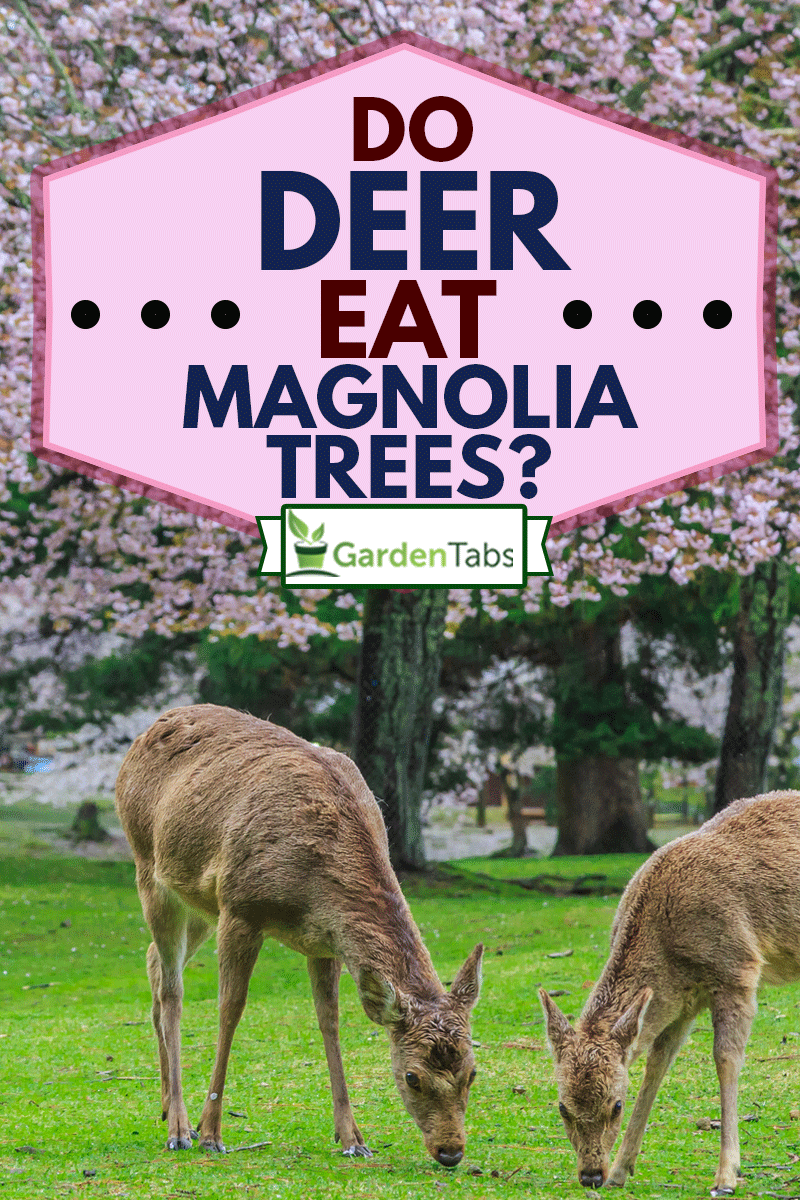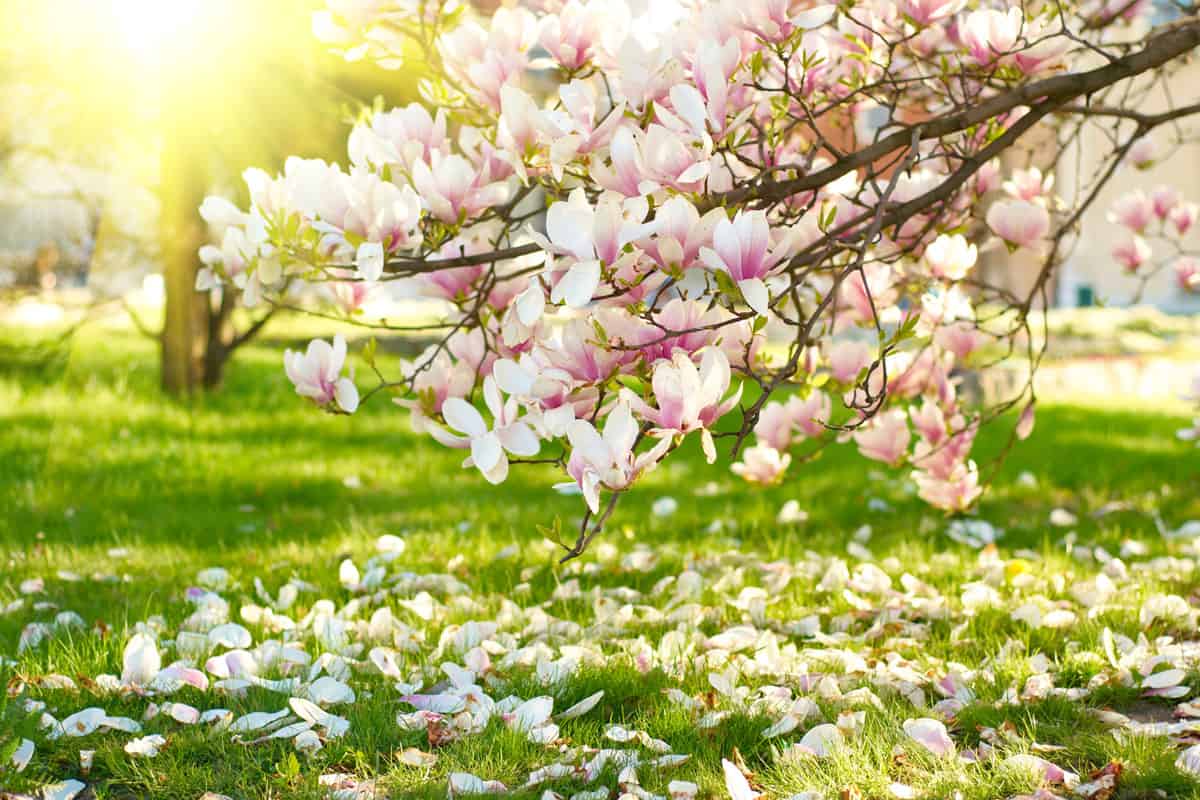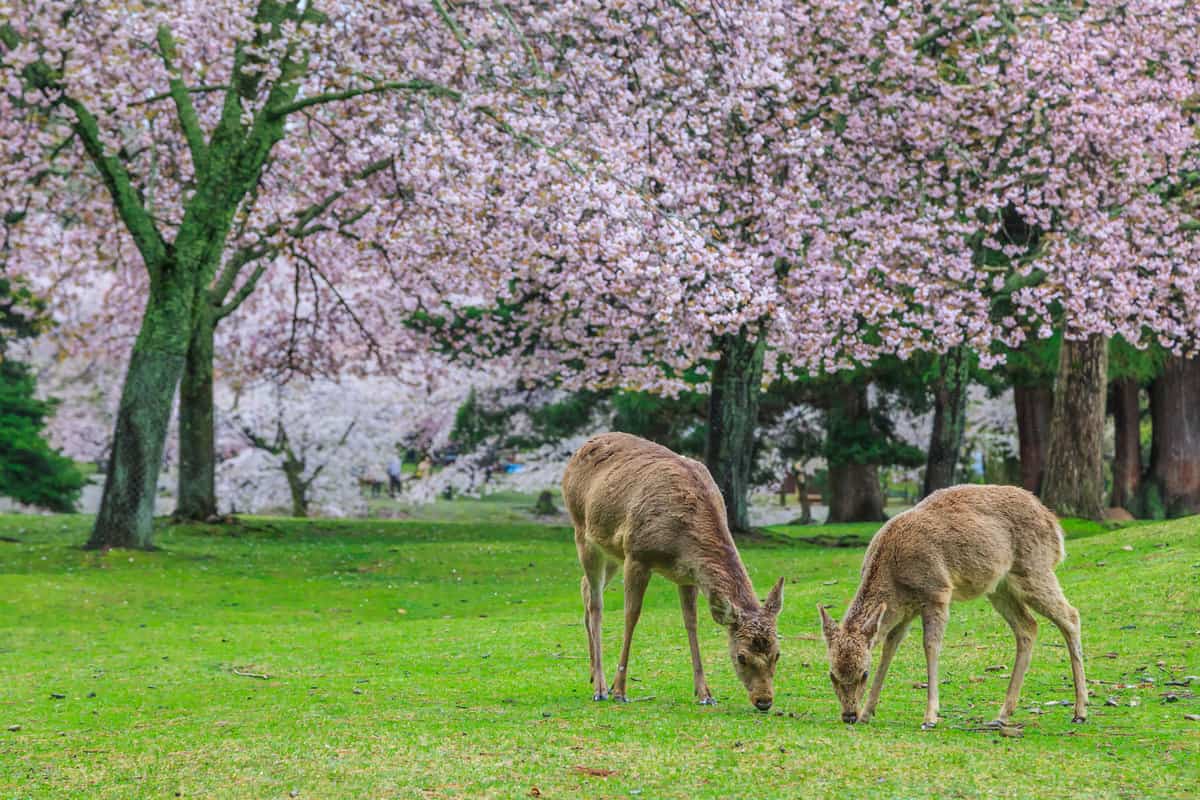Magnolia trees are prized for their beautiful flowers and intoxicating fragrances. It's no wonder why many homeowners seek to grow these beautiful plants in front of their homes or in their backyards. If you are considering growing a magnolia tree around your home, you may be wondering whether or not they are susceptible to nibbling from various types of wildlife--deer specifically. We've looked into this for you, and in this post, we will discuss whether or not deer favor magnolia trees. We will also cover any other potential wildlife that may pose a threat to your magnolia tree.
Yes, unfortunately, deer are fans of magnolia trees. If you live near a forest preserve or in an area that has acres of healthy grass and trees, deer will likely inhabit the area as well, posing a threat to your magnolia trees.
Don't let the potential threat of deer prevent you from growing a magnolia tree near your home. In fact, there are ways to keep deer away from your home and out of your garden. Please continue reading to learn more about these preventive measures and how to implement them.

Protecting Magnolia Trees From Deer

It may take a bit of trial and error to find the best method to keep deer out of your garden and away from your magnolia tree. And what works for the magnolia will likely deter them from your other plants as well. Deer are herbivores and will notoriously eat almost any tree or shrub that they have access to. They are especially fond of young tree bark, as it is tender easy to chew. This means that they pose a potentially bigger threat to freshly-planted magnolia trees.
They may not eat the tree in its entirety, but they will definitely take enough nibbles to damage the tree and negatively affect its health. That being stated, it is essential to protect your young magnolia tree from deer if you live in an open area. But how exactly do you do this? And how do you know when deer are the culprit of damaged magnolia trees? Let's discuss.
How to Spot Signs of Deer Activity
Deer are always on the hunt for a new meal. They are known to eat all through the day, including in the early morning, evening, and overnight. That being stated, unless you keep a set schedule, it may be hard to spot them when they are invading your garden. However, there are a few signs to look for if you suspect deer activity near your magnolia trees.
Deer hoof prints
The hoofprint of a deer closely resembles the shape of an upside-down heart. You may not see the entire print, but deep oval-shaped holes near your tree instead.
Deer droppings
If you begin to notice multiple small piles of pebble-like droppings in or around the entrances to your garden or backyard, it may be a sign of deer activity.
Trampled flowers, plants, and shrubs
Noticed any areas of your garden that appear to have been ransacked? It may be a sign that deer are in the area and are roaming around your garden.
Torn tree leaves
Unlike rabbits, squirrels, and other common garden pests, deer don't have incisor teeth. So to eat the leaves of a tree, they tend to take a quick pull, tearing the leaf away in one quick motion. If the leaves of your magnolia trees appear torn as opposed to nibbled, it may be a sign that deer are wandering around your property.
How Do You Protect New Trees From Deer?

There are several ways that you can keep deer away from your magnolia plants and other trees in your garden. Here we will discuss the most commonly used methods.
Try several different commercial and homemade repellents
One of the most commonly used deer repellents is fabric softener strips. Consider hanging the strips on the branches of nearby trees in your garden to help deter any nearby deer. Other common homemade repellents include garlic, ammonia or vinegar-soaked cloths, red pepper flakes, and cayenne pepper. It's best to test a few different repellants to see what works best for your garden. Be sure to stay away from poisonous repellents, as they may be fatal to deer and other wildlife in the area.
Don't plant their favorite foods
During the spring months of the year, deer are in their hungriest state. This is also the time of year where young fawns seek to regain the weight that they lost during the winter--so they're usually on the hunt for the most nutritious meal available.
This includes plants rich in moisture and protein such as lettuce, peaches, peas, strawberries, beans, and pansies. You'll also want to avoid planting your magnolias near some of the common plants that deer tend to favor all year round. This includes roses, clematis, berries, and chrysanthemum. Chances are, if the plant is smooth and tender, a deer will try to eat them.
Plant strong-smelling perennials around your garden
Consider setting up a perimeter around your garden that contains a row of plants that deer do not favor. Deer rely mainly on their sense of smell when it comes time to feeding. So if you have any pungent or strongly-scented plants or herbs such as onions, garlic, or mint, they can help to mask the smell of your magnolia tree. Try to stay away from sweet-smelling plants and shrubs if possible, as these will not only attract deer but several types of wildlife.
Plant prickly and thorny trees and bushes
Deer also use their sense of touch when feeding. That being stated, try to make the area around your magnolia tree as uncomfortable for deer as possible. You can do this by creating a bit of texture on your garden's perimeter and entrance with plants that have prickly thorns and sticky or fuzzy foliage.
Supply as little food as possible
Keep your garden and the areas around your magnolia tree as clean as possible. This means trimming any tall trees which may hide deer from predators, picking fruits as soon as they are ripe, and discarding any fallen or rotten crops as soon as possible.
Create noise
Deer are notoriously skittish, which means they are especially sensitive to loud or sudden noises. Place wind chimes or other noise-making ornaments or trinkets around your magnolia tree to help deter them.
Build levels around your tree
Deer prefer not to climb anything. So try creating a bit of terrain around your magnolia tree. This could include piling up bags of mulch or adding a sunken bed or terrace around our tree.
Try scare tactics
Don't be afraid to try various scare tactics such as fake predatory animals, scarecrows, and other garden ornaments with moving parts to help deter deer from your magnolia tree.
Give them light
If possible, set up perimeter lights around your tree or garden with motion detectors to give curious deer a bit of fright once they cross the entrance to your garden. In fact, consider using them in addition to the other scare tactics.
Fence your tree in
One of the most simple yet effective ways you can protect your magnolia plant from deer is to surround it with a sturdy fence. If your home is located near an area where Whitetail deer are prevalent (they're pretty advanced jumpers), consider making the fence at least eight feet high. Otherwise, a six-foot-tall fence should suffice. You should also consider an electric fence if your area is prone to large deer activity. Electric fences do not cause any long-term damage to deer, they just give them a bit of a jolt similar to that of static stock.
Let the dog out
If you have an outdoor garden, a dog will definitely be your garden's best friend. Dogs are one of nature's best deer repellants, as deer can smell and hear them from quite a distance away. If you have a dog, let it roam the perimeter of your garden occasionally to deter any nearby deer. It's best not to let the dog roam the garden, as it may step on your plants as well.
Set up motion-activated sprinklers
A motion-activated sprinkler is another way to scare deer that may come close to your garden or magnolia tree. Not only will the water frighten them, but the sound will likely send them running back into the woods.
What Animals Eat Magnolia Trees?
Unfortunately, magnolia trees attract quite a variety of wildlife and birds due to their aromatic, pollen-producing flowers and tender leaves. Some of the most common threats to your magnolia tree include not only deer but possums, squirrels, wild turkeys, and quail. Beetles are also big fans of magnolia trees, as they feed off the pollen in the flowers.
Where's The Best Place To Plant A Magnolia Tree?
The best place to plant magnolia trees is any garden location that receives full indirect sun or a bit of shade. It's always a good idea to plant the tree at least 30 to 50 feet away from your home to prevent potential damage from roots--though their roots aren't especially invasive.
Is There A Difference Between A Magnolia Tree And Bush?
The main difference between the magnolia tree and the shrub variety is their height and shape. While magnolia trees can grow over 30 feet tall, the bushy shrubs tend to grow no more than two to four feet.
Wrapping Things Up

We hope that this post has provided you with a sufficient number of ways to deter deer from your Magnolia plant. Before you go, be sure to check out our other posts:





Yes, Hi,Our neighbor rescued a fawn because the mother was killed. She is now about 6-8 months old and roams the area freely. She is wonderful and very friendly. We love seeing her, but lately she has been digging holes all around the root perimeter of our 20 ft tall magnolia tree and a type of cedar tree we have. She is exposing small sections of roots and I was wondering if she was looking for grubs? She hasn’t bothered any other trees but these two. Thank you, Paul